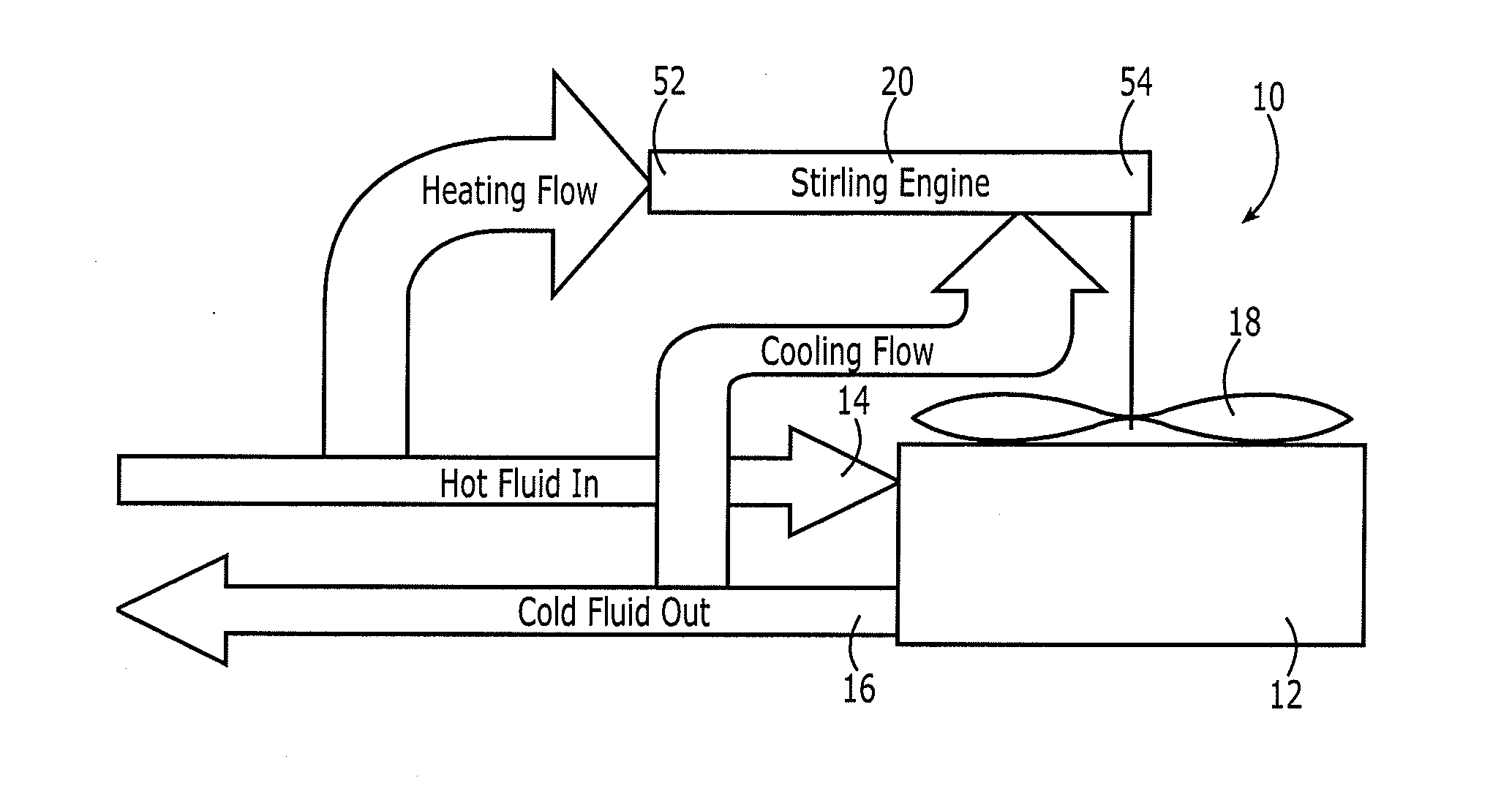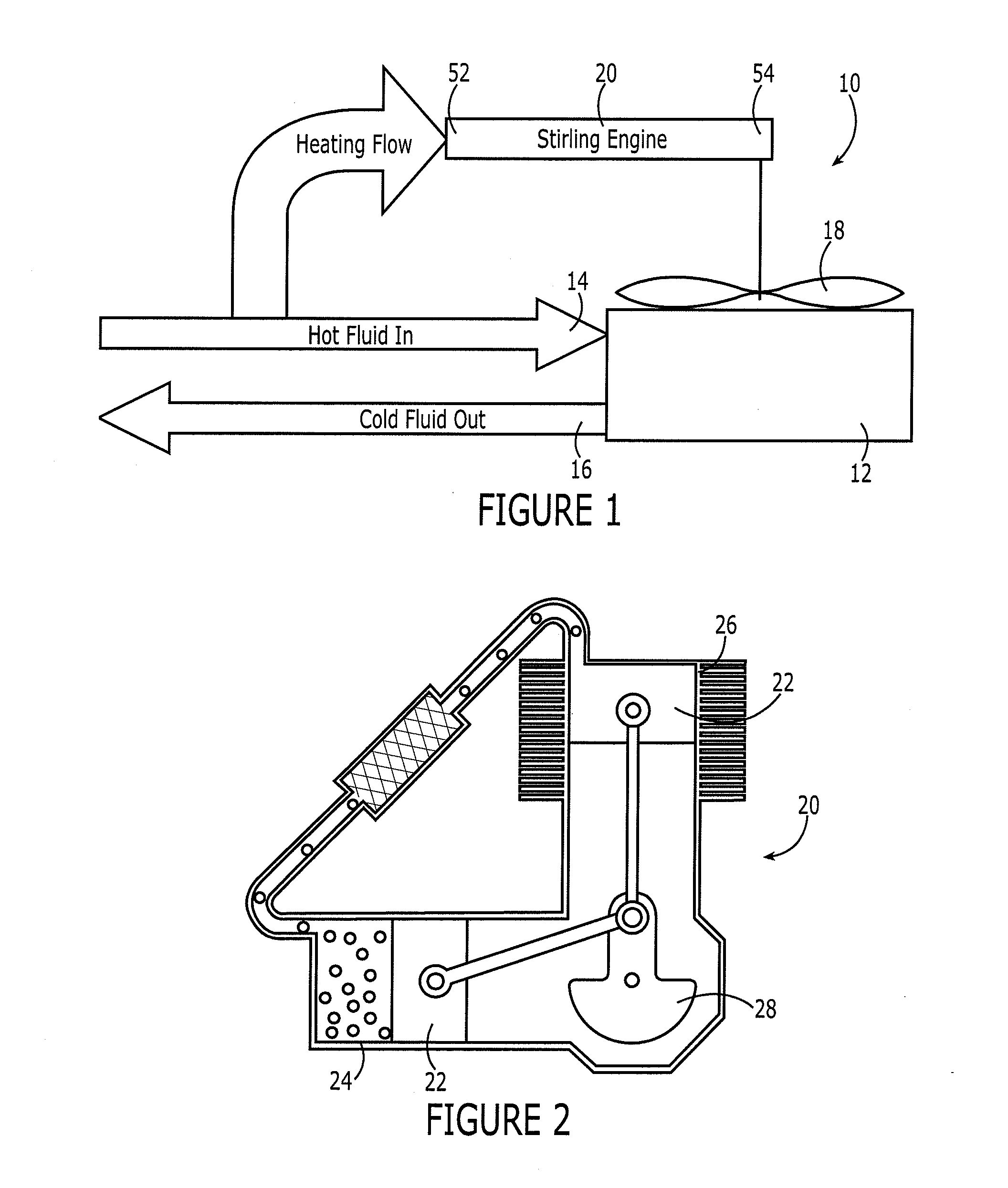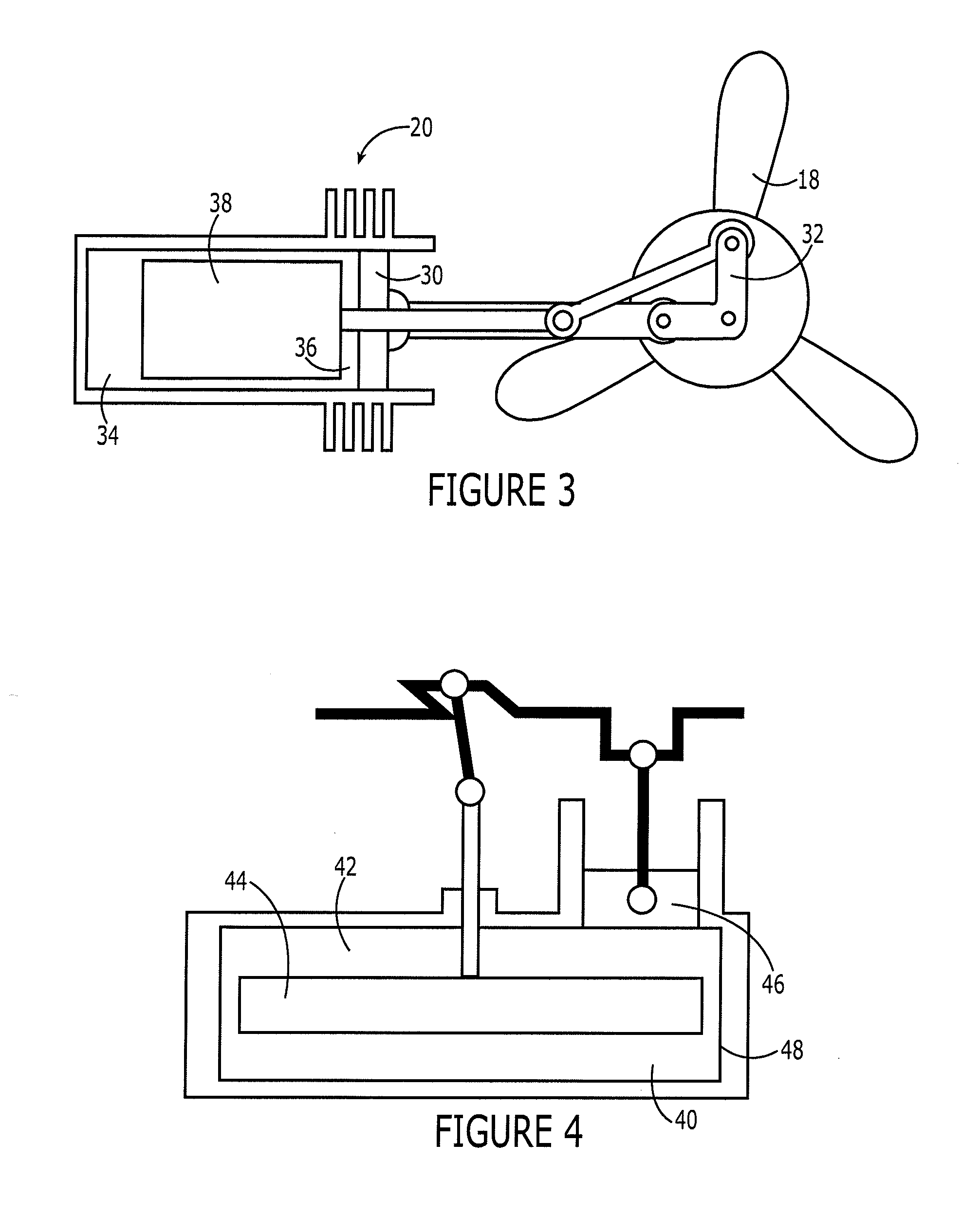Heat exchanger and associated method employing a stirling engine
a technology of stirling engine and heat exchanger, which is applied in the direction of indirect heat exchangers, machines/engines, lighting and heating apparatus, etc., can solve the problems of increasing the energy consumption of fans, and not generally very efficient convective heat transfer, so as to reduce or eliminate the energy cost and carbon footprint of heat exchangers.
- Summary
- Abstract
- Description
- Claims
- Application Information
AI Technical Summary
Benefits of technology
Problems solved by technology
Method used
Image
Examples
Embodiment Construction
[0024]Embodiments of the present disclosure now will be described more fully hereinafter with reference to the accompanying drawings, in which some, but not all embodiments are shown. Indeed, these embodiments may be embodied in many different forms and should not be construed as limited to the embodiments set forth herein; rather, these embodiments are provided so that this disclosure will satisfy applicable legal requirements. Like numbers refer to like elements throughout.
[0025]A heat exchanger 10 in accordance with one embodiment of the present disclosure is illustrated in FIG. 1. The heat exchanger 10 may include a plurality of coils 12 configured to carry a primary fluid. The primary fluid that is circulated through the plurality of coils 12 may be any of a variety of fluids including various gas or liquids. The plurality of coils 12 may include an inlet 14 through which the primary fluid enters and an outlet 16 through which the primary fluid exits. During the flow of the pri...
PUM
 Login to View More
Login to View More Abstract
Description
Claims
Application Information
 Login to View More
Login to View More - R&D
- Intellectual Property
- Life Sciences
- Materials
- Tech Scout
- Unparalleled Data Quality
- Higher Quality Content
- 60% Fewer Hallucinations
Browse by: Latest US Patents, China's latest patents, Technical Efficacy Thesaurus, Application Domain, Technology Topic, Popular Technical Reports.
© 2025 PatSnap. All rights reserved.Legal|Privacy policy|Modern Slavery Act Transparency Statement|Sitemap|About US| Contact US: help@patsnap.com



